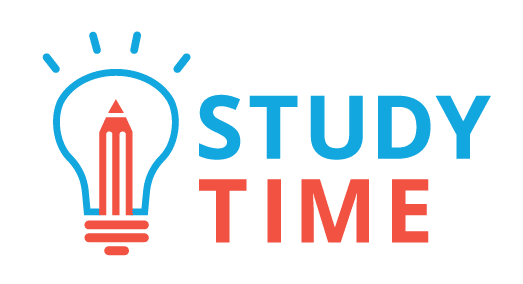

School & Study
Beyond school, just for fun, wholesome half-hour, study advice, walkthrough guides + more, past papers, resource answers, ncea level 1, ncea level 2, ncea level 3, account details.

How To Analyse NCEA Film in 6 Steps
Written by studytimenz
You’re gonna be asked to analyse The Truman Show at least once in your NCEA career if you’re taking English or Media Studies. If not, it’ll be the creepiest cinematic work in NZ history, Heavenly Creatures.
From the minds that brought you How to Analyse NCEA Poetry in 6 Steps, StudyTime is happy to present the eagerly-anticipated sequel. This time, on a medium people actually like (film)!
Films can be kind of weird. It can be difficult trying to extract deep philosophical musings from I am Legend – but it’s possible. You’ve just got to trust in the power of a well-supported yarn, know your techniques, and realise that there’s no wrong answers in English.
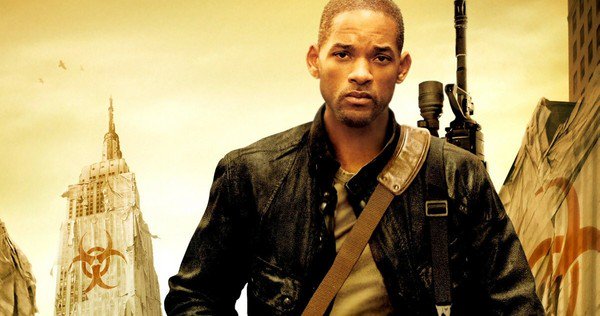
There’s no wrong way to watch a film – as long as you back it up. So, with these six steps from people who have also sat in class watching Schindler’s List many times, you’ll be on your way to Excellence.
1. What to talk about
You’ll notice that the name of the film essay paper is ‘Analyse Visual Text’ – that’s because when we write about films, we’re writing about it in pretty much the same way we would write about books. Films are a part of literature too, and so our essay is on how a creator uses language and techniques to express ideas.
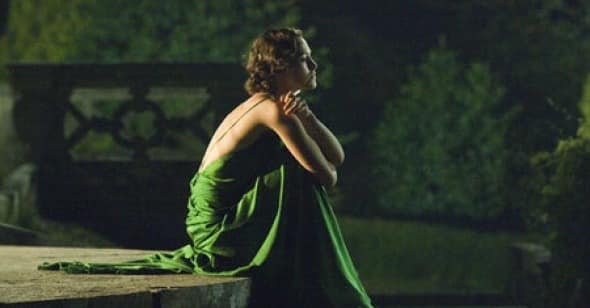
So, what do you actually put in your essay as evidence? The answer: specified aspects of visual or oral text. That doesn’t help, so here’s a list:
- Purposes (what the director is trying to achieve through something in the film).
- Audiences (who the director wants to be able to get something from the film).
- Ideas (themes, motifs, symbols, etc.)
- Characters (and what ideas they represent).
- Setting (everything about context, the location, time, characters, era)
- “Language features” for film (cinematography, mise-en-scene, editing, design, sound, acting, dialogue, etc.)
- Structure (narrative sequence (AKA storyline structure), beginnings, endings, flashbacks, etc).
The use of some of these things should help the director to get some kind of idea or purpose across. When you read an essay question, you should be asking yourself: how and why does one of these aspects give me an answer?
2. Language Features
Yeah, camera angles are technically a language feature. We don’t get it either. Directors spend a whole lot of money and a whole lot of time to perfectly shoot, reshoot, and edit the scene you’re watching in class – and everything they did is for a purpose.
Sometimes, we watch films and something really stands out. A certain shot makes you feel something unexpected, or a character says something quite deep and profound, which hits home. Often, it just feels like a part of the film, until you realise how clever and deliberate it was. Either way, it’s a part of the craft of filmmaking, and you should be writing about it.
Here’s a couple of the main ones explained:
Cinematography
includes things like camera angles, zooms, colour, and a whole lot more. The more films you watch with this in mind, the more you’ll see differences in directing styles. Wes Anderson uses a pastel colour palette, which gives the Grand Budapest Hotel a real 1900s luxury vibe. Quentin Tarantino, on the other hand, uses a whole lot of red, and so his movies feel violent. Cinematography is pretty much everything the camera does.

Sometimes, cinematography works more with the subconscious than the conscious. It’s hard to pinpoint exactly what the camera is doing that’s so important, but if it wasn’t there, it’d be a completely different scene. For example, horror movies often use shaky cameras or quick cuts, and that actually gives us adrenaline. If shaky-camera was used in a rom com, however, it would just make it more difficult to enjoy Ryan Gosling.

Mis-en-Scene
is pretty much everything in a shot. It’s a fancy French name for how and why everything is the way it is and visible to the audience – does the vase in American Beauty give audiences the forced impression of homeliness? (Who knows, but write about it.)
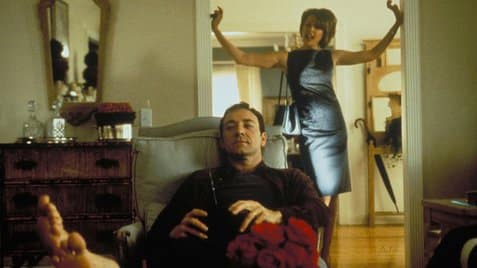
is a huge one, and includes ambience (footsteps in a big empty space is a favourite for creepy scenes, as is phones ringing in a boring and stressful office environment the character doesn’t want to be a part of), sound effects, and music (horror movies without music are about 82% less scary).

3. Use Secondary Sources
There’s no way that you’re going to catch every single language feature or film technique watching a film by yourself. Some are so abstract that they’re near impossible – the director’s put it in as a little artistic flourish, knowing full well that they’re going to be missed by the viewing population. To check this theory out, there’s some really cool videos on cinematography on YouTube, and even some on specific films, like Blade Runner 2049 .
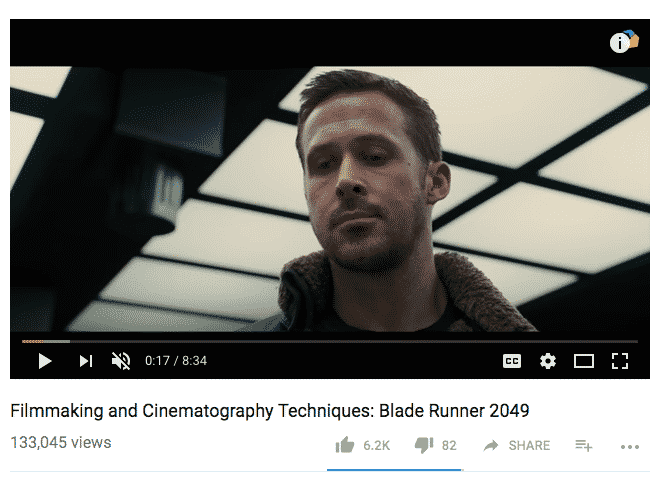
So, step 3 is to just Google your film, and find as many articles, reviews, and videos as possible. You’ll be surprised what NCEA gold you can find.
4. The Director-Audience Relationship
As we mentioned earlier, nothing is accidental in film. Someone actually went out and bought that specific vase you’re barely looking at in the scene.
The most important relationship in the film is the one between the director and us, and everything the director does eventually goes back to the effect it has on the audience.
When you’re writing your essay, make sure you’re not talking about the film in isolation.
Instead of discussing how the high angle as the Dementor grabs Harry Potter was used to put Harry in a less powerful position, discuss how this was a deliberate choice to create the feeling of the audience looking down on Harry – this is a tool for creating a sense of empathy for our protagonist and viewing him as a vulnerable hero.

And, again, when you’re talking about the director’s purpose (the A in TEXAS) – there’s no wrong answer.
5. Insight, Interpretation, Appreciation
To really make sure you’re getting Es in visual text, you’re going to have to be showing these three things – especially for Level 3. Weaving these in is a sure-fire way of making your marker happy, and isn’t that what we all want in the end?
Insight refers to looking into the film, rather than just viewing it at face value. Instead of talking about what the film is about, talk about what it’s about (deeper meaning, not plot). Talk about language features and film techniques, talk about purpose, talk about characters as representing us.
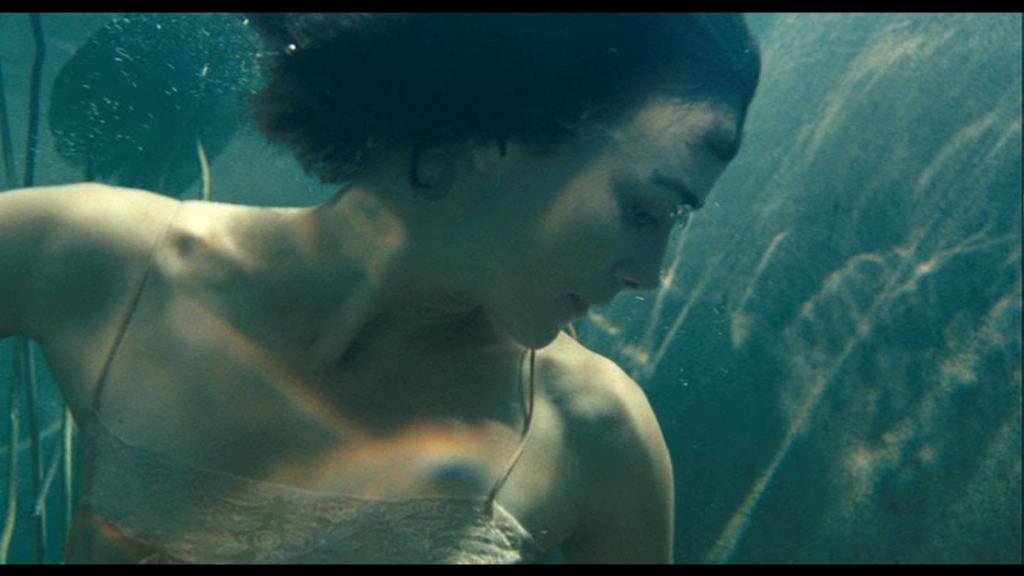
Interpretation pretty much means what it says on the Google Dictionary. You need to have an analysis of the text, and that means having an idea of what it means to you. You can literally extract any lesson or moral from the text, and bring it back to society or the human condition (see below) every single time.
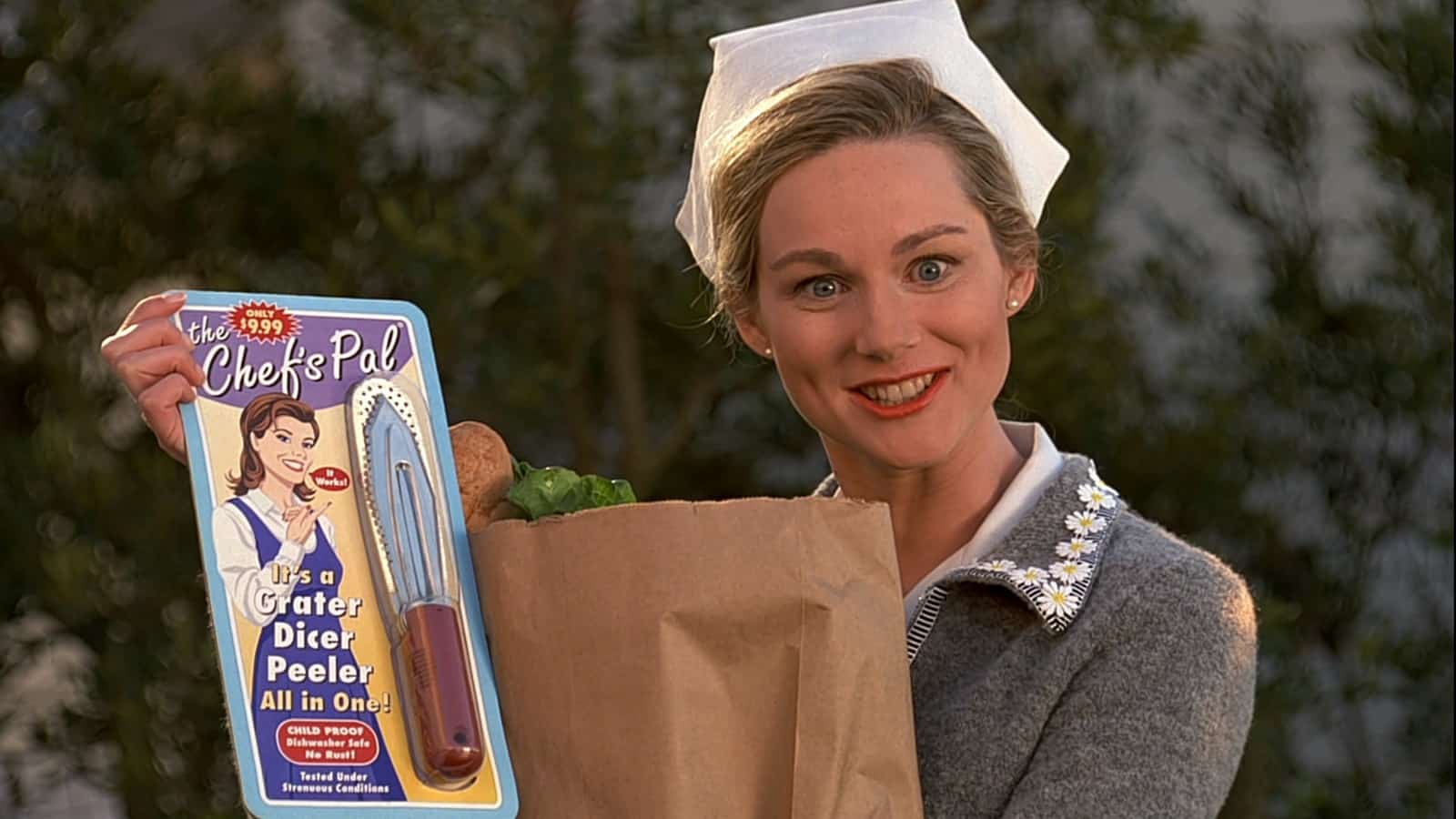
Appreciation means respecting the director’s work and craft of the film . This doesn’t mean ending the essay with “10/10 would recommend”, but by emphasising that the techniques the director is using does have an effect on the audience and is contributing to a film that makes us feel things or see the world differently.
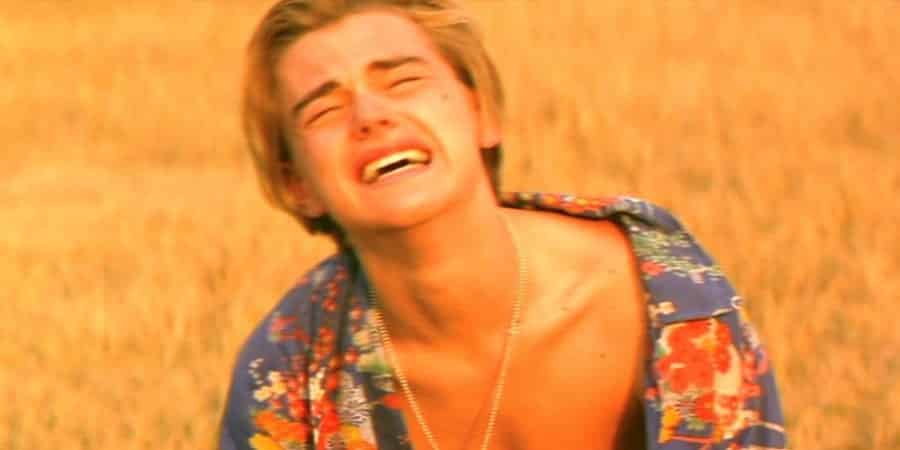
6. The Big Three
You think you were going to get through an English article without talking about society? This is English.The Big Three are the three things you want to be bringing your essay back to to get those E8s: Society: make links with real world issues and the way our society works (or doesn’t), and the similarities/differences between the society in the text and ours.

The human condition: this is the abstract name for the experience of being human, or the things that are inherent in humanity: emotions, experiences, vices – we are, after all, only human.
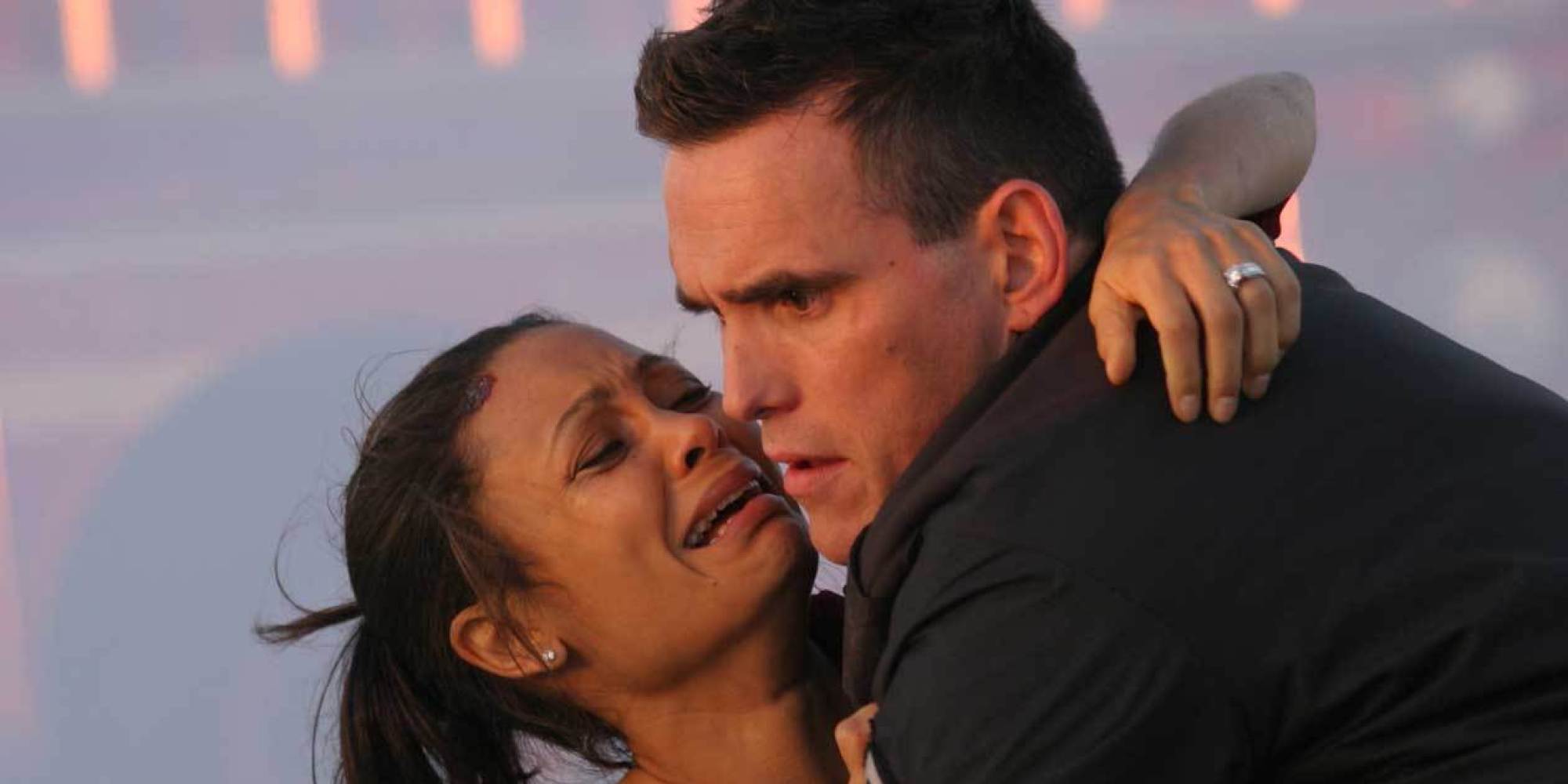
Text in general: literature is a powerful tool to write about. How does the way this text is constructed compare to others? Is this protagonist a hero or an anti-hero, and why does this make the text important?
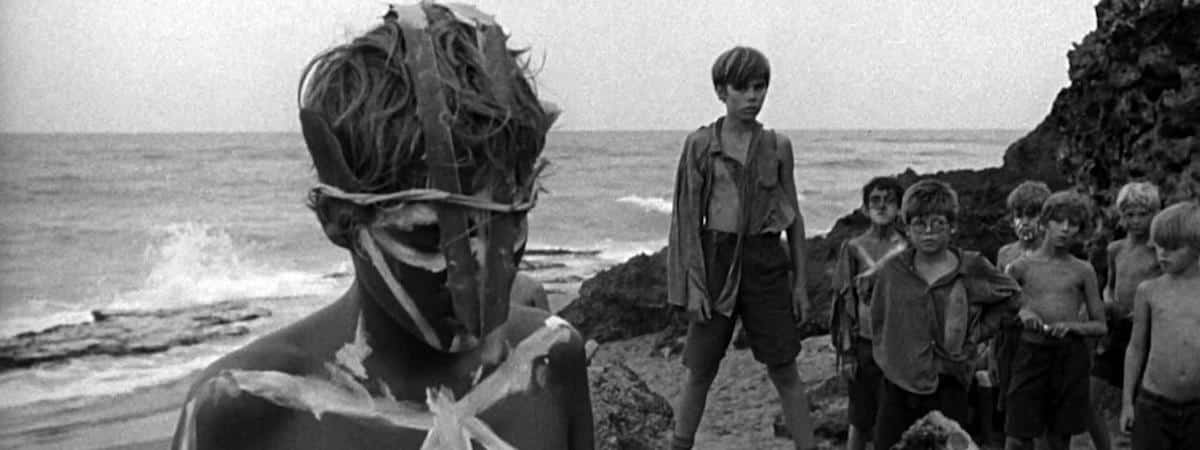
So there you have it – you just got a crash course in movies for NCEA. With these six steps, you’ll be well on your way to smashing out the best visual text essay you’ve ever written. Now go and watch Schindler’s List again.
9 Study Hacks When You’re Unmotivated AF
How to study with past exams, writing in the real world, how to prepare for exams, what to do when your goals aren’t going to plan, how to effectively study with a past paper, the science of habit-building, moving onwards and upwards after exams, why failure is okay.
Failure’s often seen as a bad thing, but sometimes it can actually be good. We share how you can turn failure into success.
How To Bounce Back From Mock Exams
How to analyse ncea poetry in 6 steps, understanding science subjects, how to improve your focus in and out of the classroom, 3 ways to study for your drama exam, a procrastinator’s guide to planning, has your motivation hit a wall here’s how to push through, types of learners don’t exist, why you might be feeling unmotivated, recognition versus recall, why critical thinking is so important, dealing with multiple assessments, navigating life after high school, the never-ending capacity of the brain, what to do in high school to prepare for university, comments 0 comments, submit a comment cancel reply.
You must be logged in to post a comment.
Is Climate Change Real?
Mocks are over… what now | whh #23, everyone is stressed | whh #28, using study leave effectively | whh season 2 bonus, how to lift your spirits during covid19 lockdown | whh season 3 #4, 7 things to remember before results are out, 6 step guide to writing a killer essay, planning your university studies, neuroplasticity, how to make (good) goals for 2020, the study method you’re forgetting: retrieval methods, how to get back into the school year, how to catch up on your studies, maintaining new habits, dealing with exam anxiety, how to study for correspondence subjects.

Film Analysis
What this handout is about.
This handout introduces film analysis and and offers strategies and resources for approaching film analysis assignments.
Writing the film analysis essay
Writing a film analysis requires you to consider the composition of the film—the individual parts and choices made that come together to create the finished piece. Film analysis goes beyond the analysis of the film as literature to include camera angles, lighting, set design, sound elements, costume choices, editing, etc. in making an argument. The first step to analyzing the film is to watch it with a plan.
Watching the film
First it’s important to watch the film carefully with a critical eye. Consider why you’ve been assigned to watch a film and write an analysis. How does this activity fit into the course? Why have you been assigned this particular film? What are you looking for in connection to the course content? Let’s practice with this clip from Alfred Hitchcock’s Vertigo (1958). Here are some tips on how to watch the clip critically, just as you would an entire film:
- Give the clip your undivided attention at least once. Pay close attention to details and make observations that might start leading to bigger questions.
- Watch the clip a second time. For this viewing, you will want to focus specifically on those elements of film analysis that your class has focused on, so review your course notes. For example, from whose perspective is this clip shot? What choices help convey that perspective? What is the overall tone, theme, or effect of this clip?
- Take notes while you watch for the second time. Notes will help you keep track of what you noticed and when, if you include timestamps in your notes. Timestamps are vital for citing scenes from a film!
For more information on watching a film, check out the Learning Center’s handout on watching film analytically . For more resources on researching film, including glossaries of film terms, see UNC Library’s research guide on film & cinema .
Brainstorming ideas
Once you’ve watched the film twice, it’s time to brainstorm some ideas based on your notes. Brainstorming is a major step that helps develop and explore ideas. As you brainstorm, you may want to cluster your ideas around central topics or themes that emerge as you review your notes. Did you ask several questions about color? Were you curious about repeated images? Perhaps these are directions you can pursue.
If you’re writing an argumentative essay, you can use the connections that you develop while brainstorming to draft a thesis statement . Consider the assignment and prompt when formulating a thesis, as well as what kind of evidence you will present to support your claims. Your evidence could be dialogue, sound edits, cinematography decisions, etc. Much of how you make these decisions will depend on the type of film analysis you are conducting, an important decision covered in the next section.
After brainstorming, you can draft an outline of your film analysis using the same strategies that you would for other writing assignments. Here are a few more tips to keep in mind as you prepare for this stage of the assignment:
- Make sure you understand the prompt and what you are being asked to do. Remember that this is ultimately an assignment, so your thesis should answer what the prompt asks. Check with your professor if you are unsure.
- In most cases, the director’s name is used to talk about the film as a whole, for instance, “Alfred Hitchcock’s Vertigo .” However, some writers may want to include the names of other persons who helped to create the film, including the actors, the cinematographer, and the sound editor, among others.
- When describing a sequence in a film, use the literary present. An example could be, “In Vertigo , Hitchcock employs techniques of observation to dramatize the act of detection.”
- Finding a screenplay/script of the movie may be helpful and save you time when compiling citations. But keep in mind that there may be differences between the screenplay and the actual product (and these differences might be a topic of discussion!).
- Go beyond describing basic film elements by articulating the significance of these elements in support of your particular position. For example, you may have an interpretation of the striking color green in Vertigo , but you would only mention this if it was relevant to your argument. For more help on using evidence effectively, see the section on “using evidence” in our evidence handout .
Also be sure to avoid confusing the terms shot, scene, and sequence. Remember, a shot ends every time the camera cuts; a scene can be composed of several related shots; and a sequence is a set of related scenes.
Different types of film analysis
As you consider your notes, outline, and general thesis about a film, the majority of your assignment will depend on what type of film analysis you are conducting. This section explores some of the different types of film analyses you may have been assigned to write.
Semiotic analysis
Semiotic analysis is the interpretation of signs and symbols, typically involving metaphors and analogies to both inanimate objects and characters within a film. Because symbols have several meanings, writers often need to determine what a particular symbol means in the film and in a broader cultural or historical context.
For instance, a writer could explore the symbolism of the flowers in Vertigo by connecting the images of them falling apart to the vulnerability of the heroine.
Here are a few other questions to consider for this type of analysis:
- What objects or images are repeated throughout the film?
- How does the director associate a character with small signs, such as certain colors, clothing, food, or language use?
- How does a symbol or object relate to other symbols and objects, that is, what is the relationship between the film’s signs?
Many films are rich with symbolism, and it can be easy to get lost in the details. Remember to bring a semiotic analysis back around to answering the question “So what?” in your thesis.
Narrative analysis
Narrative analysis is an examination of the story elements, including narrative structure, character, and plot. This type of analysis considers the entirety of the film and the story it seeks to tell.
For example, you could take the same object from the previous example—the flowers—which meant one thing in a semiotic analysis, and ask instead about their narrative role. That is, you might analyze how Hitchcock introduces the flowers at the beginning of the film in order to return to them later to draw out the completion of the heroine’s character arc.
To create this type of analysis, you could consider questions like:
- How does the film correspond to the Three-Act Structure: Act One: Setup; Act Two: Confrontation; and Act Three: Resolution?
- What is the plot of the film? How does this plot differ from the narrative, that is, how the story is told? For example, are events presented out of order and to what effect?
- Does the plot revolve around one character? Does the plot revolve around multiple characters? How do these characters develop across the film?
When writing a narrative analysis, take care not to spend too time on summarizing at the expense of your argument. See our handout on summarizing for more tips on making summary serve analysis.
Cultural/historical analysis
One of the most common types of analysis is the examination of a film’s relationship to its broader cultural, historical, or theoretical contexts. Whether films intentionally comment on their context or not, they are always a product of the culture or period in which they were created. By placing the film in a particular context, this type of analysis asks how the film models, challenges, or subverts different types of relations, whether historical, social, or even theoretical.
For example, the clip from Vertigo depicts a man observing a woman without her knowing it. You could examine how this aspect of the film addresses a midcentury social concern about observation, such as the sexual policing of women, or a political one, such as Cold War-era McCarthyism.
A few of the many questions you could ask in this vein include:
- How does the film comment on, reinforce, or even critique social and political issues at the time it was released, including questions of race, ethnicity, gender, and sexuality?
- How might a biographical understanding of the film’s creators and their historical moment affect the way you view the film?
- How might a specific film theory, such as Queer Theory, Structuralist Theory, or Marxist Film Theory, provide a language or set of terms for articulating the attributes of the film?
Take advantage of class resources to explore possible approaches to cultural/historical film analyses, and find out whether you will be expected to do additional research into the film’s context.
Mise-en-scène analysis
A mise-en-scène analysis attends to how the filmmakers have arranged compositional elements in a film and specifically within a scene or even a single shot. This type of analysis organizes the individual elements of a scene to explore how they come together to produce meaning. You may focus on anything that adds meaning to the formal effect produced by a given scene, including: blocking, lighting, design, color, costume, as well as how these attributes work in conjunction with decisions related to sound, cinematography, and editing. For example, in the clip from Vertigo , a mise-en-scène analysis might ask how numerous elements, from lighting to camera angles, work together to present the viewer with the perspective of Jimmy Stewart’s character.
To conduct this type of analysis, you could ask:
- What effects are created in a scene, and what is their purpose?
- How does this scene represent the theme of the movie?
- How does a scene work to express a broader point to the film’s plot?
This detailed approach to analyzing the formal elements of film can help you come up with concrete evidence for more general film analysis assignments.
Reviewing your draft
Once you have a draft, it’s helpful to get feedback on what you’ve written to see if your analysis holds together and you’ve conveyed your point. You may not necessarily need to find someone who has seen the film! Ask a writing coach, roommate, or family member to read over your draft and share key takeaways from what you have written so far.
Works consulted
We consulted these works while writing this handout. This is not a comprehensive list of resources on the handout’s topic, and we encourage you to do your own research to find additional publications. Please do not use this list as a model for the format of your own reference list, as it may not match the citation style you are using. For guidance on formatting citations, please see the UNC Libraries citation tutorial . We revise these tips periodically and welcome feedback.
Aumont, Jacques, and Michel Marie. 1988. L’analyse Des Films . Paris: Nathan.
Media & Design Center. n.d. “Film and Cinema Research.” UNC University Libraries. Last updated February 10, 2021. https://guides.lib.unc.edu/filmresearch .
Oxford Royale Academy. n.d. “7 Ways to Watch Film.” Oxford Royale Academy. Accessed April 2021. https://www.oxford-royale.com/articles/7-ways-watch-films-critically/ .
You may reproduce it for non-commercial use if you use the entire handout and attribute the source: The Writing Center, University of North Carolina at Chapel Hill
Make a Gift

Want to create or adapt books like this? Learn more about how Pressbooks supports open publishing practices.
50 Film Analysis
Film analysis, what this handout is about.
This handout provides a brief definition of film analysis compared to literary analysis, provides an introduction to common types of film analysis, and offers strategies and resources for approaching assignments.
What is film analysis, and how does it differ from literary analysis?
Film analysis is the process in which film is analyzed in terms of semiotics, narrative structure, cultural context, and mise-en-scene, among other approaches. If these terms are new to you, don’t worry—they’ll be explained in the next section.
Analyzing film, like analyzing literature (fiction texts, etc.) , is a form of rhetorical analysis—critically analyzing and evaluating discourse, including words, phrases, and images. Having a clear argument and supporting evidence is every bit as critical to film analysis as to other forms of academic writing.
Unlike literature, film incorporates audiovisual elements and therefore introduces a new dimension to analysis. Ultimately, however, analysis of film is not too different. Think of all the things that make up a scene in a film: the actors, the lighting, the angles, the colors. All of these things may be absent in literature, but they are deliberate choices on the part of the director, producer, or screenwriter—as are the words chosen by the author of a work of literature. Furthermore, literature and film incorporate similar elements. They both have plots, characters, dialogue, settings, symbolism, and, just as the elements of literature can be analyzed for their intent and effect, these elements can be analyzed the same way in film.
Different types of film analysis
Listed here are common approaches to film analysis, but this is by no means an exhaustive list, and you may have discussed other approaches in class. As with any other assignment, make sure you understand your professor’s expectations. This guide is best used to understand prompts or, in the case of more open-ended assignments, consider the different ways to analyze film.
Keep in mind that any of the elements of film can be analyzed, oftentimes in tandem. A single film analysis essay may simultaneously include all of the following approaches and more. As Jacques Aumont and Michel Marie propose in Analysis of Film, there is no correct, universal way to write film analysis.
Semiotic analysis
Semiotic analysis is the analysis of meaning behind signs and symbols, typically involving metaphors, analogies, and symbolism.
This doesn’t necessarily need to be something dramatic; think about how you extrapolate information from the smallest signs in your day to day life. For instance, what characteristics can tell you about someone’s personality? Something as simple as someone’s appearance can reveal information about them. Mismatched shoes and bedhead might be a sign of carelessness (or something crazy happened that morning!), while an immaculate dress shirt and tie would suggest that the person is prim and proper. Continuing in that vein:
- What might you be able to infer about characters from small hints?
- How are these hints (signs) used to construct characters? How do they relate to the relative role of those characters, or the relationships between multiple characters?
Symbols denote concepts (liberty, peace, etc.) and feelings (hate, love, etc.) that they often have nothing to do with. They are used liberally in both literature and film, and finding them uses a similar process. Ask yourself:
- In Frozen Elsa’s gloves appear in multiple scenes.
- Her gloves are first given to her by her father to restrain her magic. She continues to wear them throughout the coronation scene, before finally, in the Let It Go sequence, she throws them away.
Again, the method of semiotic analysis in film is similar to that of literature. Think about the deeper meaning behind objects or actions.
- Elsa’s gloves represent fear of her magic and, by extension, herself. Though she attempts to contain her magic by hiding her hands within gloves and denying part of her identity, she eventually abandons the gloves in a quest for self-acceptance.
Narrative structure analysis
Narrative structure analysis is the analysis of the story elements, including plot structure, character motivations, and theme. Like the dramatic structure of literature (exposition, rising action, climax, falling action, resolution), film has what is known as the Three-Act Structure: “Act One: Setup, Act Two: Confrontation, and Act Three: Resolution.” Narrative structure analysis breaks the story of the film into these three elements and might consider questions like:
- How does the story follow or deviate from typical structures?
- What is the effect of following or deviating from this structure?
- What is the theme of the film, and how is that theme constructed?
Consider again the example of Frozen. You can use symbolism and narrative structure in conjunction by placing the symbolic objects/events in the context of the narrative structure. For instance, the first appearance of the gloves is in Act One, while their abandoning takes place in Act Two; thus, the story progresses in such a way that demonstrates Elsa’s personal growth. By the time of Act Three, the Resolution, her aversion to touch (a product of fearing her own magic) is gone, reflecting a theme of self-acceptance.
Contextual analysis
Contextual analysis is analysis of the film as part of a broader context. Think about the culture, time, and place of the film’s creation. What might the film say about the culture that created it? What were/are the social and political concerns of the time period? Or, like researching the author of a novel, you might consider the director, producer, and other people vital to the making of the film. What is the place of this film in the director’s career? Does it align with his usual style of directing, or does it move in a new direction? Other examples of contextual approaches might be analyzing the film in terms of a civil rights or feminist movement.
For example, Frozen is often linked to the LGBTQ social movement. You might agree or disagree with this interpretation, and, using evidence from the film, support your argument.
Some other questions to consider:
- How does the meaning of the film change when seen outside of its culture?
- What characteristics distinguishes the film as being of its particular culture?
Mise-en-scene analysis
Mise-en-scene analysis is analysis of the arrangement of compositional elements in film—essentially, the analysis of audiovisual elements that most distinctly separate film analysis from literary analysis. Remember that the important part of a mise-en-scene analysis is not just identifying the elements of a scene, but explaining the significance behind them.
- What effects are created in a scene, and what is their purpose?
- How does the film attempt to achieve its goal by the way it looks, and does it succeed?
Audiovisual elements that can be analyzed include (but are not limited to): props and costumes, setting, lighting, camera angles, frames, special effects, choreography, music, color values, depth, placement of characters, etc. Mise-en-scene is typically the most foreign part of writing film analysis because the other components discussed are common to literary analysis, while mise-en-scene deals with elements unique to film. Using specific film terminology bolsters credibility, but you should also consider your audience. If your essay is meant to be accessible to non-specialist readers, explain what terms mean. The Resources section of this handout has links to sites that describe mise-en-scene elements in detail.
Rewatching the film and creating screen captures (still images) of certain scenes can help with detailed analysis of colors, positioning of actors, placement of objects, etc. Listening to the soundtrack can also be helpful, especially when placed in the context of particular scenes.
Some example questions:
- How is the lighting used to construct mood? Does the mood shift at any point during the film, and how is that shift in mood created?
- What does the setting say about certain characters? How are props used to reveal aspects of their personality?
- What songs were used, and why were they chosen? Are there any messages in the lyrics that pertain to the theme?
Writing the film analysis essay
Writing film analysis is similar to writing literary analysis or any argumentative essay in other disciplines: Consider the assignment and prompts, formulate a thesis (see the Brainstorming Handout and Thesis Statement Handout for help crafting a nuanced argument), compile evidence to prove your thesis, and lay out your argument in the essay. Your evidence may be different from what you are used to. Whereas in the English essay you use textual evidence and quotes, in a film analysis essay, you might also include audiovisual elements to bolster your argument.
When describing a sequence in a film, use the present tense, like you would write in the literary present when describing events of a novel, i.e. not “Elsa took off her gloves,” but “Elsa takes off her gloves.” When quoting dialogue from a film, if between multiple characters, use block quotes: Start the quotation on a new line, with the entire quote indented one inch from the left margin. However, conventions are flexible, so ask your professor if you are unsure. It may also help to follow the formatting of the script, if you can find it. For example:
ELSA: But she won’t remember I have powers? KING: It’s for the best.
You do not need to use quotation marks for blocked-off dialogue, but for shorter quotations in the main text, quotation marks should be double quotes (“…”).
Here are some tips for approaching film analysis:
- Make sure you understand the prompt and what you are being asked to do. Focus your argument by choosing a specific issue to assess.
- Review your materials. Rewatch the film for nuances that you may have missed in the first viewing. With your thesis in mind, take notes as you watch. Finding a screenplay of the movie may be helpful, but keep in mind that there may be differences between the screenplay and the actual product (and these differences might be a topic of discussion!).
- Develop a thesis and an outline, organizing your evidence so that it supports your argument. Remember that this is ultimately an assignment—make sure that your thesis answers what the prompt asks, and check with your professor if you are unsure.
- Move beyond only describing the audiovisual elements of the film by considering the significance of your evidence. Demonstrate understanding of not just what film elements are, but why and to what effect they are being used. For more help on using your evidence effectively, see ‘Using Evidence In An Argument’ in the Evidence Handout .
New York Film Academy Glossary Movie Outline Glossary Movie Script Database Citation Practices: Film and Television
Works Consulted
We consulted these works while writing the original version of this handout. This is not a comprehensive list of resources on the handout’s topic, and we encourage you to do your own research to find the latest publications on this topic. Please do not use this list as a model for the format of your own reference list, as it may not match the citation style you are using. For guidance on formatting citations, please see the UNC Libraries citation tutorial .
Aumont, Jacques, and Michel Marie. L’analyse Des Films. Paris: Nathan, 1988. Print. Pruter, Robin Franson. “Writing About Film.” Writing About Film. DePaul University, 08 Mar. 2004. Web. 01 May 2016.
Film Analysis Copyright © 2020 by Liza Long; Amy Minervini; and Joel Gladd is licensed under a Creative Commons Attribution-NonCommercial-NoDerivatives 4.0 International License , except where otherwise noted.
Share This Book
How to Write a Film Analysis Essay: Examples, Outline, & Tips
A film analysis essay might be the most exciting assignment you have ever had! After all, who doesn’t love watching movies? You have your favorite movies, maybe something you watched years ago, perhaps a classic, or a documentary. Or your professor might assign a film for you to make a critical review. Regardless, you are totally up for watching a movie for a film analysis essay.
However, once you have watched the movie, facing the act of writing might knock the wind out of your sails because you might be wondering how to write a film analysis essay. In summary, writing movie analysis is not as difficult as it might seem, and Custom-writing.org experts will prove this. This guide will help you choose a topic for your movie analysis, make an outline, and write the text.️ Film analysis examples are added as a bonus! Just keep reading our advice on how to get started.
❓ What Is a Film Analysis Essay?
- 🚦 Film Analysis Types
📽️ Movie Analysis Format
✍️ how to write a film analysis, 🎦 film analysis template, 🎬 film analysis essay topics.
- 📄 Essay Examples
🔗 References
To put it simply, film analysis implies watching a movie and then considering its characteristics : genre, structure, contextual context, etc. Film analysis is usually considered to be a form of rhetorical analysis . The key to success here is to formulate a clear and logical argument, supporting it with examples.
🚦 Film Analysis Essay Types
Since a film analysis essay resembles literature analysis, it makes sense that there are several ways to do it. Its types are not limited to the ones described here. Moreover, you are free to combine the approaches in your essay as well. Since your writing reflects your own opinion, there is no universal way to do it.

- Semiotic analysis . If you’re using this approach, you are expected to interpret the film’s symbolism. You should look for any signs that may have a hidden meaning. Often, they reveal some character’s features. To make the task more manageable, you can try to find the objects or concepts that appear on the screen multiple times. What is the context they appear in? It might lead you to the hidden meaning of the symbols.
- Narrative structure analysis . This type is quite similar to a typical literature guide. It includes looking into the film’s themes, plot, and motives. The analysis aims to identify three main elements: setup, confrontation, and resolution. You should find out whether the film follows this structure and what effect it creates. It will make the narrative structure analysis essay if you write about the theme and characters’ motivations as well.
- Contextual analysis . Here, you would need to expand your perspective. Instead of focusing on inner elements, the contextual analysis looks at the time and place of the film’s creation. Therefore, you should work on studying the cultural context a lot. It can also be a good idea to mention the main socio-political issues of the time. You can even relate the film’s success to the director or producer and their career.
- Mise-en-scene analysis . This type of analysis works with the most distinctive feature of the movies, audiovisual elements. However, don’t forget that your task is not only to identify them but also to explain their importance. There are so many interconnected pieces of this puzzle: the light to create the mood, the props to show off characters’ personalities, messages hidden in the song lyrics.
To write an effective film analysis essay, it is important to follow specific format requirements that include the following:
- Standard essay structure. Just as with any essay, your analysis should consist of an introduction with a strong thesis statement, body paragraphs, and a conclusion. The main body usually includes a summary and an analysis of the movie’s elements.
- Present tense for events in the film. Use the present tense when describing everything that happens in the movie. This way, you can make smooth transitions between describing action and dialogue. It will also improve the overall narrative flow.
- Proper formatting of the film’s title. Don’t enclose the movie’s title in quotation marks; instead, italicize it. In addition, use the title case : that is, capitalize all major words.
- Proper use of the characters’ names. When you mention a film character for the first time, name the actor portraying them. After that, it is enough to write only the character’s name.
- In-text citations. Use in-text citations when describing certain scenes or shots from the movie. Format them according to your chosen citation style. If you use direct quotes, include the time-stamp range instead of page numbers. Here’s how it looks in the MLA format: (Smith 0:11:24–0:12:35).
Even though film analysis is similar to the literary one, you might still feel confused with where to begin. No need to worry; there are only a few additional steps you need to consider during the writing process.
Need more information? It can be found in the video below.
Starting Your Film Analysis Essay
There are several things you need to do before you start writing your film analysis paper. First and foremost, you have to watch the movie. Even if you have seen it a hundred times, you need to watch it again to make a good film analysis essay.
Note that you might be given an essay topic or have to think of it by yourself. If you are free to choose a topic for your film analysis essay, reading some critical reviews before you watch the film might be a good idea. By doing this in advance, you will already know what to look for when watching the movie.
In the process of watching, keep the following tips in mind:
- Consider your impression of the movie
- Enumerate memorable details
- Try to interpret the movie message in your way
- Search for the proof of your ideas (quotes from the film)
- Make comments on the plot, settings, and characters
- Draw parallels between the movie you are reviewing and some other movies
Making a Film Analysis Essay Outline
Once you have watched and possibly re-watched your assigned or chosen movie from an analytical point of view, you will need to create a movie analysis essay outline . The task is pretty straightforward: the outline can look just as if you were working on a literary analysis or an article analysis.
- Introduction : This includes the basics of the movie, including the title, director, and the date of release. You should also present the central theme or ideas in the movie and your thesis statement .
- Summary : This is where you take the time to present an overview of the primary concepts in the movie, including the five Ws (who, what, when, where, and why)—don’t forget how!—as well as anything you wish to discuss that relates to the point of view, style, and structure.
- Analysis : This is the body of the essay and includes your critical analysis of the movie, why you did or did not like it, and any supporting material from the film to support your views. It would help if you also discussed whether the director and writer of the movie achieved the goal they set out to achieve.
- Conclusion: This is where you can state your thesis again and provide a summary of the primary concepts in a new and more convincing manner, making a case for your analysis. You can also include a call-to-action that will invite the reader to watch the movie or avoid it entirely.
You can find a great critical analysis template at Thompson Rivers University website. In case you need more guidance on how to write an analytical paper, check out our article .
Writing & Editing Your Film Analysis Essay
We have already mentioned that there are differences between literary analysis and film analysis. They become especially important when one starts writing their film analysis essay.
First of all, the evidence you include to support the arguments is not the same. Instead of quoting the text, you might need to describe the audiovisual elements.
However, the practice of describing the events is similar in both types. You should always introduce a particular sequence in the present tense. If you want to use a piece of a dialogue between more than two film characters, you can use block quotes. However, since there are different ways to do it, confirm with your supervisor.
For your convenience, you might as well use the format of the script, for which you don’t have to use quotation marks:
ELSA: But she won’t remember I have powers?
KING: It’s for the best.
Finally, to show off your proficiency in the subject, look at the big picture. Instead of just presenting the main elements in your analysis, point out their significance. Describe the effect they make on the overall impression form the film. Moreover, you can dig deeper and suggest the reasons why such elements were used in a particular scene to show your expertise.
Stuck writing a film analysis essay? Worry not! Use our template to structure your movie analysis properly.
Introduction
- The title of the film is… [title]
- The director is… [director’s name] He/she is known for… [movies, style, etc.]
- The movie was released on… [release date]
- The themes of the movie are… [state the film’s central ideas]
- The film was made because… [state the reasons]
- The movie is… because… [your thesis statement].
- The main characters are… [characters’ names]
- The events take place in… [location]
- The movie is set in… [time period]
- The movie is about… [state what happens in the film and why]
- The movie left a… [bad, unforgettable, lasting, etc.] impression in me.
- The script has… [a logical sequence of events, interesting scenes, strong dialogues, character development, etc.]
- The actors portray their characters… [convincingly, with intensity, with varying degree of success, in a manner that feels unnatural, etc.]
- The soundtrack is [distracting, fitting, memorable, etc.]
- Visual elements such as… [costumes, special effects, etc.] make the film [impressive, more authentic, atmospheric, etc.]
- The film succeeds/doesn’t succeed in engaging the target audience because it… [tells a compelling story, features strong performances, is relevant, lacks focus, is unauthentic, etc.]
- Cultural and societal aspects make the film… [thought-provoking, relevant, insightful, problematic, polarizing, etc.]
- The director and writer achieved their goal because… [state the reasons]
- Overall, the film is… [state your opinion]
- I would/wouldn’t recommend watching the movie because… [state the reasons]
- Analysis of the film Inception by Christopher Nolan .
- Examine the rhetoric in the film The Red Balloon .
- Analyze the visual effects of Zhang Yimou’s movie Hero .
- Basic concepts of the film Interstellar by Christopher Nolan.
- The characteristic features of Federico Fellini’s movies.
- Analysis of the movie The Joker .
- The depiction of ethical issues in Damaged Care .
- Analyze the plot of the film Moneyball .
- Explore the persuasive techniques used in Henry V .
- Analyze the movie Killing Kennedy .
- Discuss the themes of the film Secret Window .
- Describe the role of audio and video effects in conveying the message of the documentary Life in Renaissance .
- Compare and analyze the films Midnight Cowboy and McCabe and Mrs. Miller .
- Analysis of the movie Rear Window .
- The message behind the film Split .
- Analyze the techniques used by Tim Burton in his movie Sleepy Hollow .
- The topic of children’s abuse and importance of trust in Joseph Sargent’s Sybil .
- Examine the themes and motives of the film Return to Paradise by Joseph Ruben.
- The issues of gender and traditions in the drama The Whale Rider.
- Analysis of the film Not Easily Broken by Duke Bill.
- The symbolism in R. Scott’s movie Thelma and Louise .
- The meaning of audiovisual effects in Citizen Kane .
- Analyze the main characters of The Girl with the Dragon Tattoo .
- Discuss the historical accuracy of the documentary The Civil War .
- Analysis of the movie Through a Glass Darkly .
- Explore the core idea of the comedy Get Out .
- The problem of artificial intelligence and human nature in Ex Machina .
- Three principles of suspense used in the drama The Fugitive .
- Examine the ideas Michael Bay promotes in Armageddon .
- Analyze the visual techniques used in Tenet by Christopher Nolan.
- Analysis of the movie The Green Mile .
- Discrimination and exclusion in the film The Higher Learning .
- The hidden meaning of the scenes in Blade Runner .
- Compare the social messages of the films West Side Story and Romeo + Juliet .
- Highlighting the problem of children’s mental health in the documentary Kids in Crisis .
- Discuss the ways Paul Haggis establishes the issue of racial biases in his movie Crash .
- Analyze the problem of moral choice in the film Gone Baby Gone .
- Analysis of the historical film Hacksaw Ridge .
- Explore the main themes of the film Mean Girls by Mark Walters .
- The importance of communication in the movie Juno .
- Describe the techniques the authors use to highlight the problems of society in Queen and Slim .
- Examine the significance of visual scenes in My Family/ Mi Familia .
- Analysis of the thriller Salt by Phillip Noyce.
- Analyze the message of Greg Berlanti’s film Love, Simon .
- Interpret the symbols of the film The Wizard of Oz (1939).
- Discuss the modern issues depicted in the film The Corporation .
- Moral lessons of Edward Zwick’s Blood Diamond .
- Analysis of the documentary Solitary Nation .
- Describe the audiovisual elements of the film Pride and Prejudice (2005) .
- The problem of toxic relationships in Malcolm and Marie .
📄 Film Analysis Examples
Below you’ll find two film analysis essay examples. Note that the full versions are downloadable for free!
Film Analysis Example #1: The Intouchables
Raising acute social problems in modern cinema is a common approach to draw the public’s attention to the specific issues and challenges of people facing crucial obstacles. As a film for review, The Intouchables by Oliver Nakache and Éric Toledano will be analyzed, and one of the themes raised in this movie is the daily struggle of the person with severe disabilities. This movie is a biographical drama with comedy elements. The Intouchables describes the routine life of a French millionaire who is confined to a wheelchair and forced to receive help from his servants. The acquaintance of the disabled person with a young and daring man from Parisian slums changes the lives of both radically. The film shows that for a person with disabilities, recognition as a full member of society is more important than sympathy and compassion, and this message expressed comically raises an essential problem of human loneliness.
Movie Analysis Example #2: Parasite
Parasite is a 2019 South Korean black comedy thriller movie directed by Bong Joon-ho and is the first film with a non-English script to win Best Picture at the Oscars in 2020. With its overwhelming plot and acting, this motion picture retains a long-lasting effect and some kind of shock. The class serves as a backbone and a primary objective of social commentary within the South Korean comedy/thriller (Kench, 2020). Every single element and detail in the movie, including the student’s stone, the contrasting architecture, family names, and characters’ behavior, contribute to the central topic of the universal problem of classism and wealth disparity. The 2020 Oscar-winning movie Parasite (2019) is a phenomenal cinematic portrayal and a critical message to modern society regarding the severe outcomes of the long-established inequalities within capitalism.
Want more examples? Check out this bonus list of 10 film analysis samples. They will help you gain even more inspiration.
- “Miss Representation” Documentary Film Analysis
- “The Patriot”: Historical Film Analysis
- “The Morning Guy” Film Analysis
- 2012′ by Roland Emmerich Film Analysis
- “The Crucible” (1996) Film Analysis
- The Aviator’ by Martin Scorsese Film Analysis
- The “Lions for Lambs” Film Analysis
- Bill Monroe – Father of Bluegrass Music Film Analysis
- Lord of the Rings’ and ‘Harry Potter’ Film Analysis
- Red Tails by George Lucas Film Analysis
Film Analysis Essay FAQ
- Watch the movie or read a detailed plot summary.
- Read others’ film reviews paying attention to details like key characters, movie scenes, background facts.
- Compose a list of ideas about what you’ve learned.
- Organize the selected ideas to create a body of the essay.
- Write an appropriate introduction and conclusion.
The benefits of analyzing a movie are numerous . You get a deeper understanding of the plot and its subtle aspects. You can also get emotional and aesthetic satisfaction. Film analysis enables one to feel like a movie connoisseur.
Here is a possible step by step scenario:
- Think about the general idea that the author probably wanted to convey.
- Consider how the idea was put across: what characters, movie scenes, and details helped in it.
- Study the broader context: the author’s other works, genre essentials, etc.
The definition might be: the process of interpreting a movie’s aspects. The movie is reviewed in terms of details creating the artistic value. A film analysis essay is a paper presenting such a review in a logically structured way.
- Film Analysis – UNC Writing Center
- Film Writing: Sample Analysis // Purdue Writing Lab
- Yale Film Analysis – Yale University
- Film Terms And Topics For Film Analysis And Writing
- Questions for Film Analysis (Washington University)
- Resources on Film Analysis – Cinema Studies (University of Toronto)
- Does Film Analysis Take the Magic out of Movies?
- Film Analysis Research Papers – Academia.edu
- What’s In a Film Analysis Essay? Medium
- Analysis of Film – SAGE Research Methods
- Share to Facebook
- Share to Twitter
- Share to LinkedIn
- Share to email

A critique paper is an academic writing genre that summarizes and gives a critical evaluation of a concept or work. Or, to put it simply, it is no more than a summary and a critical analysis of a specific issue. This type of writing aims to evaluate the impact of...

What is a creative essay, if not the way to express yourself? Crafting such a paper is a task that allows you to communicate your opinion and tell a story. However, even using your imagination to a great extent doesn’t free you from following academic writing rules. Don’t even get...

A compare and contrast essay — what is it? In this type of paper, you compare two different things or ideas, highlighting what is similar between the two, and you also contrast them, highlighting what is different. The two things might be events, people, books, points of view, lifestyles, or...

What is an expository essay? This type of writing aims to inform the reader about the subject clearly, concisely, and objectively. The keyword here is “inform”. You are not trying to persuade your reader to think a certain way or let your own opinions and emotions cloud your work. Just stick to the...
![film essay level 2 Short Story Analysis: How to Write It Step by Step [New]](https://custom-writing.org/blog/wp-content/uploads/2020/12/man-sits-end-trolltunga-before-mountains-284x153.jpg)
Have you ever tried to write a story analysis but ended up being completely confused and lost? Well, the task might be challenging if you don’t know the essential rules for literary analysis creation. But don’t get frustrated! We know how to write a short story analysis, and we are...

Have you ever tried to get somebody round to your way of thinking? Then you should know how daunting the task is. Still, if your persuasion is successful, the result is emotionally rewarding. A persuasive essay is a type of writing that uses facts and logic to argument and substantiate...
![film essay level 2 Common Essay Mistakes—Writing Errors to Avoid [Updated]](https://custom-writing.org/blog/wp-content/uploads/2020/12/avoid-mistakes-ccw-284x153.jpg)
One of the most critical skills that students gain during their college years is assignment writing. Composing impressive essays and research papers can be quite challenging, especially for ESL students. Nonetheless, before learning the art of academic writing, you may make numerous common essay mistakes. Such involuntary errors appear in:...

You’re probably thinking: I’m no Mahatma Gandhi or Steve Jobs—what could I possibly write in my memoir? I don’t even know how to start an autobiography, let alone write the whole thing. But don’t worry: essay writing can be easy, and this autobiography example for students is here to show...
![film essay level 2 Why I Want to Be a Teacher Essay: Writing Guide [2024]](https://custom-writing.org/blog/wp-content/uploads/2020/12/senior-male-professor-writing-blackboard-with-chalk3-284x153.jpg)
Some people know which profession to choose from childhood, while others decide much later in life. However, and whenever you come to it, you may have to elaborate on it in your personal statement or cover letter. This is widely known as “Why I Want to Be a Teacher” essay.
![film essay level 2 Friendship Essay: Writing Guide & Topics on Friendship [New]](https://custom-writing.org/blog/wp-content/uploads/2020/12/smiley-female-friends-fist-bumping-284x153.jpg)
Assigned with an essay about friendship? Congrats! It’s one of the best tasks you could get. Digging through your memories and finding strong arguments for this paper can be an enjoyable experience. I bet you will cope with this task effortlessly as we can help you with the assignment. Just...

When you are assigned an autobiography to write, tens, and even hundreds of questions start buzzing in your head. How to write autobiography essay parts? What to include? How to make your autobiography writing flow? Don’t worry about all this and use the following three simple principles and 15 creative...

A life experience essay combines the elements of narration, description, and self-reflection. Such a paper has to focus on a single event that had a significant impact on a person’s worldview and values. Writing an essay about life experience prompts students to do the following: You may struggle with such...
Have you ever read a review and asked yourself how the critic arrived at a different interpretation for the film? You are sure that you saw the same movie, but you interpreted it differently. Most moviegoers go to the cinema for pleasure and entertainment. There’s a reason why blockbuster movies attract moviegoers – cinema is a form of escape, a way to momentarily walk away from life’s troubles.
EXCELENT COVERAGE!

Hi Rebecca,
Glad you liked the post. Sure thing, feel free to share the link with your audience!
All the best.
Breakout English

How to write a film review
Writing a review is an option in many different English language exams, and films are such an obvious choice for reviews, so knowing how to write a film review is pretty important. It’s a great topic for the classroom too. Everyone watches films and there is a lot of opportunity to teach vocabulary, either film-related vocabulary or film review adjectives. I like to start off a class about films with some chat, or my personal favourite, the Movie Music Quiz , which also now has an excellent Movie Picture Quiz version too.
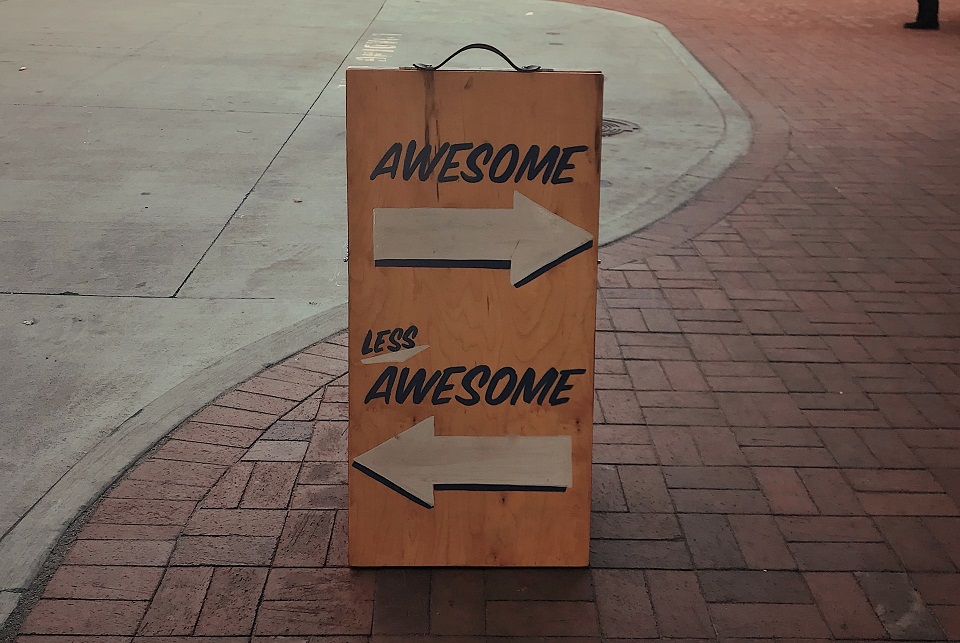
The structure of a film review
Like any writing task, it’s essential to know the structure of a film review before you start writing. A basic film review template shows you how to write a film review using a simple structure. Film reviews for First (FCE) and Advanced (CAE) Cambridge exams, as well as Trinity ISE exams, should all use a 4 paragraph structure. Another thing to remember is that your review should always have a title, and that title should include the name of the film.
- Introduction – Essential details and mini-summary
- Summary – A description of the film and some important details
- Analysis – An evaluation of different elements
- Conclusion – Your opinion and a recommendation

Introduction
In the introduction of a film review, it is crucial to mention the film title and the names of the director and the main actors. A brief summary of the film’s plot and background information can also be included, but it should not give away too much detail. The introduction should engage the reader and entice them to continue reading the review. Additionally, it is important to mention the genre and target audience of the film, which will give the reader an idea of what to expect.
In the summary section, the film review should give a comprehensive but concise description of the film, focusing on the plot, characters, and any significant events. The summary should be written in a way that does not give away the ending or spoil the film for the reader. It is important to maintain objectivity and not include personal opinions in this section. This section should provide enough detail for the reader to have a clear understanding of the film without giving too much away.
The analysis section is where the reviewer can showcase their critical skills and provide an in-depth evaluation of the film. The review should examine various elements of the film such as the script, direction, cinematography, acting, and special effects. You could also make a comparison to similar films in the same genre. The analysis should be written in an objective style with the opinion only showing through the language used.
In the conclusion, the reviewer should give their personal opinion of the film, summarising their thoughts on its strengths and weaknesses. They should also consider the target audience and whether they believe the film will appeal to them. Finally, the reviewer should provide a clear recommendation. The conclusion should be concise, leaving the reader with a clear understanding of the reviewer’s overall opinion of the film.
Using adjectives in reviews
Reviews are a great way to show off your language with impressive adjectives. If you read a film review in a newspaper or magazine, you’ll notice that the reviewer rarely, if ever, gives an explicit direct opinion. However, their opinion of the film is always crystal clear. This is through the use of adjectives.
Many adjectives have a clear connotation. They are either perceived as positive or negative. Compare these two examples. Which one is a positive description and which is negative?
- It’s a first-rate experience with an imaginative plot and a star-studded cast.
- The second-rate writing combined with weak performances is typical of this director’s work.
When using adjectives in a film review, it is important to choose words that accurately convey the reviewer’s opinion. Adjectives with strong connotations, either positive or negative, can be very effective in expressing the reviewer’s thoughts about the film. However, it is also important to use a variety of adjectives to avoid repetition and keep the review interesting. The use of adjectives can also help to paint a picture of the film, allowing the reader to get a sense of its atmosphere and tone.
The materials
Many exams, such as the Cambridge First (FCE) and Advanced (CAE) exams, as well as Trinity ISE exams, require students to write a film review as part of their writing task. These materials will provide students with a solid understanding of the structure of a film review and help them to develop their writing skills. This will give them the confidence they need to write a review that meets the requirements of the exam and impresses the examiner.
The materials will help you learn how to write an introduction, summary, analysis, and conclusion of a film review. You will also see a range of useful adjectives that you can use to express your opinions in their reviews. Finally, you will get an opportunity to practise writing film reviews, which will help you to develop your skills. Then you can check your answers with the samples provided in the answer key. Whether you’re preparing for an exam or just looking to improve your writing skills, these materials will provide you with everything you need to write a great film review.
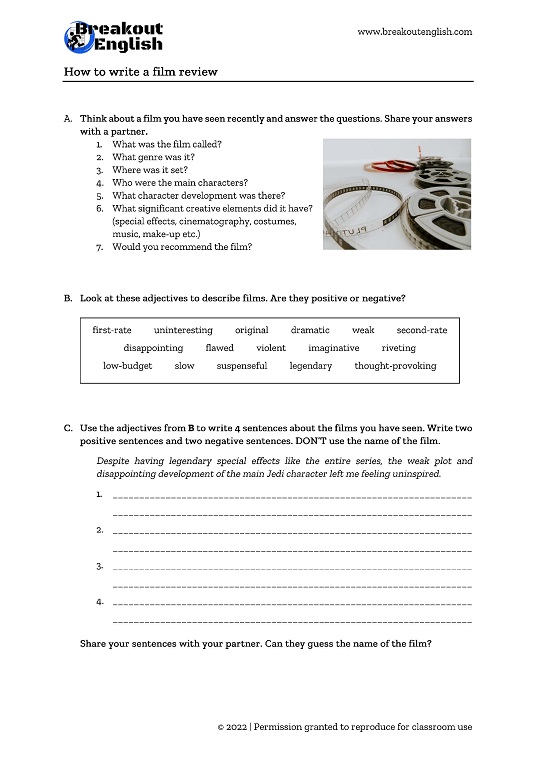
1 thought on “How to write a film review”
Interesting and useful material to be used in class. thanks!
Comments are closed.

Purdue Online Writing Lab Purdue OWL® College of Liberal Arts
Film Writing: Sample Analysis

Welcome to the Purdue OWL
This page is brought to you by the OWL at Purdue University. When printing this page, you must include the entire legal notice.
Copyright ©1995-2018 by The Writing Lab & The OWL at Purdue and Purdue University. All rights reserved. This material may not be published, reproduced, broadcast, rewritten, or redistributed without permission. Use of this site constitutes acceptance of our terms and conditions of fair use.
Introductory Note
The analysis below discusses the opening moments of the science fiction movie Ex Machina in order to make an argument about the film's underlying purpose. The text of the analysis is formatted normally. Editor's commentary, which will occasionally interrupt the piece to discuss the author's rhetorical strategies, is written in brackets in an italic font with a bold "Ed.:" identifier. See the examples below:
The text of the analysis looks like this.
[ Ed.: The editor's commentary looks like this. ]
Frustrated Communication in Ex Machina ’s Opening Sequence
Alex Garland’s 2015 science fiction film Ex Machina follows a young programmer’s attempts to determine whether or not an android possesses a consciousness complicated enough to pass as human. The film is celebrated for its thought-provoking depiction of the anxiety over whether a nonhuman entity could mimic or exceed human abilities, but analyzing the early sections of the film, before artificial intelligence is even introduced, reveals a compelling examination of humans’ inability to articulate their thoughts and feelings. In its opening sequence, Ex Machina establishes that it’s not only about the difficulty of creating a machine that can effectively talk to humans, but about human beings who struggle to find ways to communicate with each other in an increasingly digital world.
[ Ed.: The piece's opening introduces the film with a plot summary that doesn't give away too much and a brief summary of the critical conversation that has centered around the film. Then, however, it deviates from this conversation by suggesting that Ex Machina has things to say about humanity before non-human characters even appear. Off to a great start. ]
The film’s first establishing shots set the action in a busy modern office. A woman sits at a computer, absorbed in her screen. The camera looks at her through a glass wall, one of many in the shot. The reflections of passersby reflected in the glass and the workspace’s dim blue light make it difficult to determine how many rooms are depicted. The camera cuts to a few different young men typing on their phones, their bodies partially concealed both by people walking between them and the camera and by the stylized modern furniture that surrounds them. The fourth shot peeks over a computer monitor at a blonde man working with headphones in. A slight zoom toward his face suggests that this is an important character, and the cut to a point-of-view shot looking at his computer screen confirms this. We later learn that this is Caleb Smith (Domhnall Gleeson), a young programmer whose perspective the film follows.
The rest of the sequence cuts between shots from Caleb’s P.O.V. and reaction shots of his face, as he receives and processes the news that he has won first prize in a staff competition. Shocked, Caleb dives for his cellphone and texts several people the news. Several people immediately respond with congratulatory messages, and after a moment the woman from the opening shot runs in to give him a hug. At this point, the other people in the room look up, smile, and start clapping, while Caleb smiles disbelievingly—perhaps even anxiously—and the camera subtly zooms in a bit closer. Throughout the entire sequence, there is no sound other than ambient electronic music that gets slightly louder and more textured as the sequence progresses. A jump cut to an aerial view of a glacial landscape ends the sequence and indicates that Caleb is very quickly transported into a very unfamiliar setting, implying that he will have difficulty adjusting to this sudden change in circumstances.
[ Ed.: These paragraphs are mostly descriptive. They give readers the information they will need to understand the argument the piece is about to offer. While passages like this can risk becoming boring if they dwell on unimportant details, the author wisely limits herself to two paragraphs and maintains a driving pace through her prose style choices (like an almost exclusive reliance on active verbs). ]
Without any audible dialogue or traditional expository setup of the main characters, this opening sequence sets viewers up to make sense of Ex Machina ’s visual style and its exploration of the ways that technology can both enhance and limit human communication. The choice to make the dialogue inaudible suggests that in-person conversations have no significance. Human-to-human conversations are most productive in this sequence when they are mediated by technology. Caleb’s first response when he hears his good news is to text his friends rather than tell the people sitting around him, and he makes no move to take his headphones out when the in-person celebration finally breaks out. Everyone in the building is on their phones, looking at screens, or has headphones in, and the camera is looking at screens through Caleb’s viewpoint for at least half of the sequence.
Rather than simply muting the specific conversations that Caleb has with his coworkers, the ambient soundtrack replaces all the noise that a crowded building in the middle of a workday would ordinarily have. This silence sets the uneasy tone that characterizes the rest of the film, which is as much a horror-thriller as a piece of science fiction. Viewers get the sense that all the sounds that humans make as they walk around and talk to each other are being intentionally filtered out by some presence, replaced with a quiet electronic beat that marks the pacing of the sequence, slowly building to a faster tempo. Perhaps the sound of people is irrelevant: only the visual data matters here. Silence is frequently used in the rest of the film as a source of tension, with viewers acutely aware that it could be broken at any moment. Part of the horror of the research bunker, which will soon become the film’s primary setting, is its silence, particularly during sequences of Caleb sneaking into restricted areas and being startled by a sudden noise.
The visual style of this opening sequence reinforces the eeriness of the muted humans and electronic soundtrack. Prominent use of shallow focus to depict a workspace that is constructed out of glass doors and walls makes it difficult to discern how large the space really is. The viewer is thus spatially disoriented in each new setting. This layering of glass and mirrors, doubling some images and obscuring others, is used later in the film when Caleb meets the artificial being Ava (Alicia Vikander), who is not allowed to leave her glass-walled living quarters in the research bunker. The similarity of these spaces visually reinforces the film’s late revelation that Caleb has been manipulated by Nathan Bates (Oscar Isaac), the troubled genius who creates Ava.
[ Ed.: In these paragraphs, the author cites the information about the scene she's provided to make her argument. Because she's already teased the argument in the introduction and provided an account of her evidence, it doesn't strike us as unreasonable or far-fetched here. Instead, it appears that we've naturally arrived at the same incisive, fascinating points that she has. ]
A few other shots in the opening sequence more explicitly hint that Caleb is already under Nathan’s control before he ever arrives at the bunker. Shortly after the P.O.V shot of Caleb reading the email notification that he won the prize, we cut to a few other P.O.V. shots, this time from the perspective of cameras in Caleb’s phone and desktop computer. These cameras are not just looking at Caleb, but appear to be scanning him, as the screen flashes in different color lenses and small points appear around Caleb’s mouth, eyes, and nostrils, tracking the smallest expressions that cross his face. These small details indicate that Caleb is more a part of this digital space than he realizes, and also foreshadow the later revelation that Nathan is actively using data collected by computers and webcams to manipulate Caleb and others. The shots from the cameras’ perspectives also make use of a subtle fisheye lens, suggesting both the wide scope of Nathan’s surveillance capacities and the slightly distorted worldview that motivates this unethical activity.
[ Ed.: This paragraph uses additional details to reinforce the piece's main argument. While this move may not be as essential as the one in the preceding paragraphs, it does help create the impression that the author is noticing deliberate patterns in the film's cinematography, rather than picking out isolated coincidences to make her points. ]
Taken together, the details of Ex Machina ’s stylized opening sequence lay the groundwork for the film’s long exploration of the relationship between human communication and technology. The sequence, and the film, ultimately suggests that we need to develop and use new technologies thoughtfully, or else the thing that makes us most human—our ability to connect through language—might be destroyed by our innovations. All of the aural and visual cues in the opening sequence establish a world in which humans are utterly reliant on technology and yet totally unaware of the nefarious uses to which a brilliant but unethical person could put it.
Author's Note: Thanks to my literature students whose in-class contributions sharpened my thinking on this scene .
[ Ed.: The piece concludes by tying the main themes of the opening sequence to those of the entire film. In doing this, the conclusion makes an argument for the essay's own relevance: we need to pay attention to the essay's points so that we can achieve a rich understanding of the movie. The piece's final sentence makes a chilling final impression by alluding to the danger that might loom if we do not understand the movie. This is the only the place in the piece where the author explicitly references how badly we might be hurt by ignorance, and it's all the more powerful for this solitary quality. A pithy, charming note follows, acknowledging that the author's work was informed by others' input (as most good writing is). Beautifully done. ]
- Engineering & Technology
- Computer Science
- Computer Graphics
Level 2 Film Essay topics
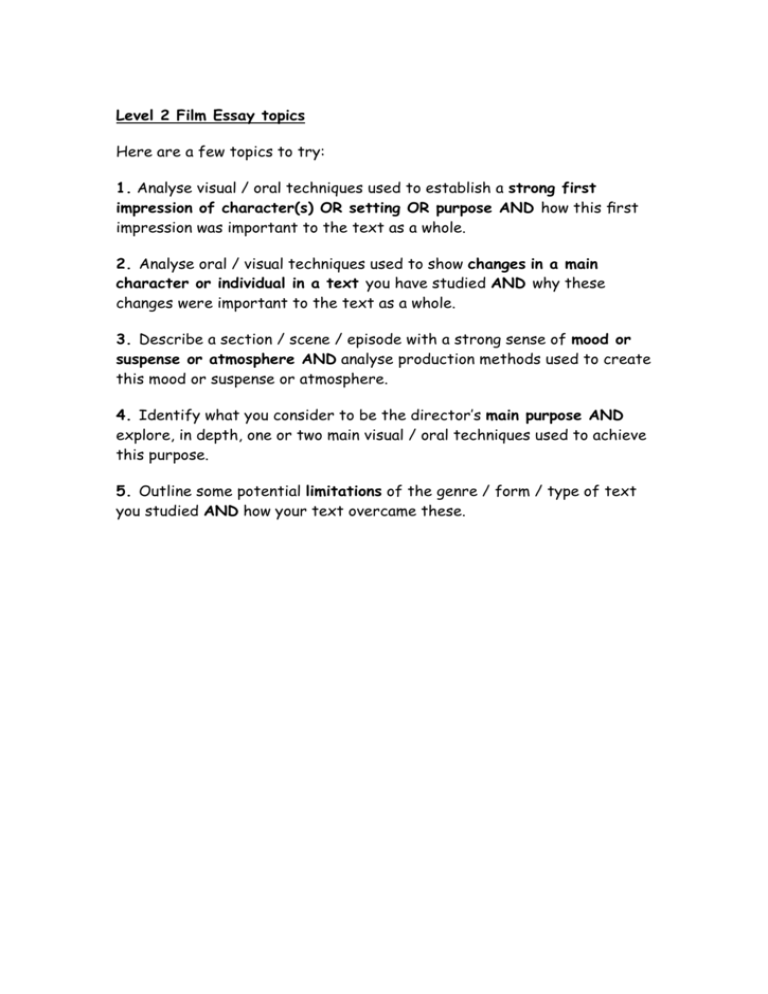
Related documents
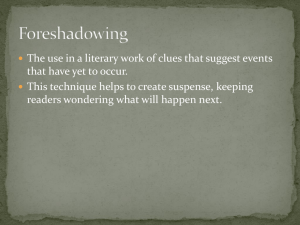
Add this document to collection(s)
You can add this document to your study collection(s)
Add this document to saved
You can add this document to your saved list
Suggest us how to improve StudyLib
(For complaints, use another form )
Input it if you want to receive answer

Step By Step Guide to Writing an Essay on Film
By Film Threat Staff | December 29, 2021
Writing an essay about a film sounds like a fun assignment to do. As part of the assignment, you get to watch the movie and write an analytical essay about your impressions. However, you will soon find that you’re staring at an empty sheet of paper or computer screen with no idea what to write, how to start writing your essay, or the essential points that need to be covered and analyzed. As an essay writing service proves, watching the movie countless times isn’t all there is to write a film analysis essay. Here’s a step-by-step guide to help you with an essay service :

1. Watch the Movie
This is the obvious starting point, but surprisingly many students skip this step. It doesn’t matter if you’ve watched the movie twice before. If you’re asked to write an essay about it, you need to watch it again. Watching the film again allows you to pay more attention to specific elements to help you write an in-depth analysis about it.
Watching the movie is crucial because it helps you not specific parts of the movie that can be used as illustrations and examples in your essay. You’re also going to explore and analyze the movie theme within your structured plan. Some of the critical elements that you have to look out for while watching the movie that may be crucial for your essay are:
- Key plot moments
- Editing style
- Stylistic elements
- Scenario execution
- Musical elements
2. Introduction
Your introduction will contain essential information about the film, such as the title, release date, director’s name, etc. This familiarizes the reader with the movie’s primary background information. In addition, researching the filmmaker may be crucial for your essay because it may help you discover valuable insights for your film analysis.
The introduction should also mention the movie’s central theme and explain why you think it was made that way.
Do not forget to include your thesis statement, which explains your focus on the movie.
3. Write a Summary
According to an essay writing service providing students help with essays , a movie summary comes after the introduction. It includes the film’s basic premise, but it doesn’t have to reveal too many details about the film. It’s a summary, after all. Write the summary like your readers have not heard about the movie before, so you can mention the most basic plots but assume you have minimal time so you won’t be going into great details.

4. Write Your Analysis
This is the central part of the essay in which you analyze the movie critically and state your impressions about the film. Ensure to support your claims with relevant materials from the movie.
There are also several creative elements in a movie that are connected to make the film a whole. You must pay attention to these elements while watching the movie and analyze them in this part of the essay.
In this, you are looking out for the dialogs, character development, completion of scenes, and logical event sequences in the film to analyze.
Ensure you try to understand the logic behind events in the film and the actor’s motives to explain the scenario better.
The responsibility of different parts of the movie, such as plan selection and scenario execution, falls on the director. So, your analysis here focuses on how the director realized the script compared to his other movies. Understanding the director’s style of directing may be crucial to coming up with a conclusion relevant to your analysis and thesis.
The casting of a film is a significant element to consider in your essay. Without a great actor, the scriptwriter and director can’t bring their ideas to life. So, watch the actor’s acting and determine if they portrayed the character effectively and if their acting aligns with the film’s main idea.
- Musical element
A movie’s musical element enhances some of the sceneries or actions in the film and sets the mood. It has a massive impact on the movie, so it’s an essential element to analyze in your essay.
- Visual elements
This includes special effects, make-up, costumes, etc., which significantly impact the film. These elements must reflect the film’s atmosphere. It is even more crucial for historical movies since it has to be specific about an era.
Ensure to analyze elements relevant to your thesis statement, so you don’t drift from your main point.
5. Conclusion
In concluding your essay, you have to summarize the primary concepts more convincingly to support your analysis. Finally, you may include a CTA for readers to watch or avoid the movie.
These are the crucial steps to take when writing an essay about a film . Knowing this beforehand prevents you from struggling to start writing after watching the movie.
Leave a Reply Cancel reply
Your email address will not be published. Required fields are marked *
Save my name, email, and website in this browser for the next time I comment.
… [Trackback]
[…] Find More Info here to that Topic: filmthreat.com/features/step-by-step-guide-to-writing-an-essay-on-film/ […]
[…] Read More: filmthreat.com/features/step-by-step-guide-to-writing-an-essay-on-film/ […]
It’s really amazing instructions! I have got the great knowledge.
[…] now and then. Unfortunately, not all of us can afford to get cinema tickets to do so. Some…Writing an essay about a film sounds like a fun assignment to do. As part of the assignment, you get…Since a few decades the film and entertainment sector have undergone some drastic transformation. […]
I can’t list the number of essays that don’t follow this format in the least. But then I find most reviews of movies terrible and most people who purport themselves to be writers as people who need to spend more time drafting and editing before publishing.
Thanks for this

Is Movie Streaming the Next Step for NFT?
Since a few decades the film and entertainment sector have undergone some drastic transformation. The first ever format to bring movies in the household...

How To Get A New Netflix Series On Your Subscription?
There are also some problems in getting new Netflix series on your subscription because of geo-restriction. If you are not in the USA then you still can't...

Amazing CBD Movies And TV Shows To Enjoy On Weekends
Most avid consumers of CBD attribute their love for it to cinemas and movies. The media always adds a touch of pizzazz to all that has to do with various...

8 Steps to Enjoy a Boring Movie
Sometimes, movies can be boring. Maybe your spouse dragged you to the theatres to watch a romantic comedy that made you fall asleep? Or maybe you went on a...

What Can We Learn from Netflix’s All-Time Top 10 movies?
Our excitement for the weekend never fades, and we begin making plans from the weekdays. Weekdays are too busy to relax and watch Netflix, so the weekends...

Where to Get Your Fill of Fantasy
Reality can be incredible, but nothing beats the feeling of stepping into a new world filled with magic, mystery, and excitement. We all need a break from...
Join our Film Threat Newsletter
Search form
Film review.
Look at the film review and do the exercises to improve your writing skills.
Instructions
Do the preparation exercise first. Then do the other exercises.
Preparation

Check your understanding: multiple choice
Check your understanding: grouping, worksheets and downloads.
What's your favourite film? Why do you like it?

Sign up to our newsletter for LearnEnglish Teens
We will process your data to send you our newsletter and updates based on your consent. You can unsubscribe at any time by clicking the "unsubscribe" link at the bottom of every email. Read our privacy policy for more information.
- Eduqas Home chevron_right
- Qualifications
AS/A Level Film Studies
For help with e-submission process click here.
Apply now and join our team of examiners.
*Subject dependent, based on marking a full allocation and completion of training (which we pay you to attend).
- Key Documents
- Past Papers / Mark Schemes
Why do some questions list the key elements or specialist areas and others don't?
The areas listed are suggested as key areas of focus for revision and final preparation, in relation to the Summer 2022 examinations. The areas listed are the focus areas relevant for that question.
The WJEC Eduqas specification is designed to introduce A level learners to a wide variety of films in order to broaden their knowledge and understanding of film and the range of responses films can generate. This specification therefore offers opportunities to study mainstream American films from the past and the present as well as a range of recent and contemporary British films, American independent films and global films, both non-English language and English language. The historical range of film represented in those films is extended by the study of silent film and significant film movements so that learners can gain a sense of the development of film from its early years to its still emerging digital future. Studies in documentary, experimental and short films add to the breadth of the learning experience.
Production work is a crucial part of this specification and is integral to learners' study of film. Studying a diverse range of films from several different contexts is designed to give learners the opportunity to apply their knowledge and understanding of how films are constructed to their own filmmaking and screenwriting. This is intended to enable learners to create high quality film and screenplay work as well as provide an informed filmmaker's perspective on their own study of film.
The WJEC Eduqas specification is designed to introduce AS learners to a wide variety of films in order to broaden their knowledge and understanding of film and the range of responses films can generate. This specification therefore offers opportunities to study mainstream and independent American and British films from the past and the present as well as more recent non-English language European films.
In addition to the knowledge and understanding learners gain from their GCSE film study course.
Why choose Eduqas?
- Over 30 years' experience in delivering film qualifications – we know what teachers want
- Get access to our Film Studies Teacher Community on Facebook
- An exciting and diverse range of set films
- Free digital resources
- The opportunity to develop film-making and screenwriting skills to explore and pursue creative interests.
- Support from our regional support team Direct access to film subject specialists
- Direct access to film subject specialists
An interactive map to support centres wishing to share experiences and ideas online and face-to-face.
Important information, past papers, marking schemes, entry/amendment uploads & make post-results enquiries.
Find out more about the Moving Image Awards, designed in partnership with the British Film Institute.
Grade boundaries are the minimum number of marks needed to achieve each grade.
- Digital Resources
- Online Exam Review
Discover FREE Digital Resources!
Unlock your learners’ potential with an impressive range of FREE digital resources, teaching tools and materials.
View resources
EDUQAS ENDORSED TITLES
EDUQAS NON-ENDORSED TITLES
Online Exam Review – gain access to general data, exam questions, marking schemes and examiner comments.
Visit OER website
- Upcoming Courses
- On Demand Courses
- Materials from previous events

Download your free Guide to Switching!
This is a hidden field that will be populated via javascript in preparation for submission to Campaign Monitor letting you know the name of the document the user downloaded
Follow Polygon online:
- Follow Polygon on Facebook
- Follow Polygon on Youtube
- Follow Polygon on Instagram
Site search
- Dragon’s Dogma 2
- Ghost of Tsushima
- Zelda: Tears of the Kingdom
- Baldur’s Gate 3
- GTA 5 cheats
- PlayStation
- Dungeons & Dragons
- Magic: The Gathering
- Board Games
- All Tabletop
- All Entertainment
- What to Watch
- What to Play
- Buyer’s Guides
- Really Bad Chess
- All Puzzles
Filed under:
- Entertainment
Kill is the brutal thriller that action die-hards can’t miss this summer
Kill rewrites the expected Bollywood playbook in a rip-roaring action thriller
Share this story
- Share this on Facebook
- Share this on Reddit
- Share All sharing options
Share All sharing options for: Kill is the brutal thriller that action die-hards can’t miss this summer
/cdn.vox-cdn.com/uploads/chorus_image/image/73372088/Kill_Lionsgate.0.jpg)
It’s been nice to see the growing popularity of Indian cinema in the States. For many people — especially those not familiar with the work of the legendary Satyajit Ray — their entry place was Aamir Khan’s excellent 2001 cricket drama Lagaan , the most recent Indian film to receive an Academy Award nomination for Best Foreign Language Film. For others, it was S.S. Rajamouli’s RRR , the exuberant and maximalist epic anti-colonialist saga and the first Indian film by an Indian production to win an Academy Award .
Those movies aren’t very similar in their stylistic approach, but they do have a lot in common: action buoyed by romance, big musical numbers with lavish visuals, and strong anti-colonialist narratives. They — and many other recent successful Indian movie exports — contain elements of “ masala film ,” an approach that first appeared in the 1970s but remains strong today, in large part because of the work of Khan, Rajamouli, and others to reinvent the form and keep it alive. Masala movies are known for blending all sorts of genres together to create an experience that can appeal to as many moviegoers as possible. But not every Indian movie falls into the masala category, and the new hyper-violent Hindi action thriller Kill is here to prove that to U.S. audiences when it arrives in theaters on July 4.
After getting back from a long mission, Indian army commando Amrit (Lakshya) has received news from the love of his life (Tanya Maniktala) that she is being forced by her powerful father into an arranged marriage, and the wedding is tomorrow. Along with his friend and fellow commando (Raghav Juyal), he decides to try to stop it, secretly joining the wedding party on a train to Delhi. But when bandits attack, things go horribly wrong, and violence and mayhem ensue.
A tense thriller with terrific extended fight sequences, director Nikhil Nagesh Bhat made Kill with the intent of making a brutal action movie like The Raid , playing off a real-life experience he had with a train robbery . He hired veteran action choreographers Oh Se-yeong ( Snowpiercer ) and Parvez Shaikh (who worked with Oh on the Bollywood blockbuster War ) to design the action, and both put in some of their best work to date.
Kill makes the most of the close-quarters setting and the many different weapons on display — knives, limbs, fire extinguishers, and the architecture/layout of the train itself all play into the combat. It’s a real treat for action fans, especially when things take a turn 45 minutes in and the violence amps up significantly. Kill doesn’t go from 0 to 60; it starts at 60 and goes to 200. The movie’s action design is basically broken into two halves, allowing the team (and Lakshya as a lead) to show a variety of approaches to the fight scenes. I won’t say too much, to avoid spoilers, but the action design becomes much more lethal in response to the events of the story, which allows Kill to start with a more classic nonlethal martial arts approach to action before transitioning into something closer to what you might find in a horror movie.
With some of the most brutal, violent kills you will find in an action movie, Kill is not for everyone — again, this is absolutely not a masala film. But if you like the sound of a movie like The Raid , The Night Comes for Us , Mayhem! , and Project Wolf Hunting , with a dash of Train to Busan and the slasher-infused Equalizer 3 , you can’t miss this one. There’s a lot of value in the targeted thrills of a genre exercise, and Kill knows what its intended audience wants very, very well. Next stop on this train ride: cult classic status.
Kill is out in theaters July 4.
The 2024 summer preview
- The most anticipated TV shows of summer 2024
- The most anticipated movies of summer 2024
- Can Lev Grossman do for King Arthur what he did for Harry Potter?
- The Nice House by the Sea is a dream vacation at the end of the world with the worst people you know
The next level of puzzles.
Take a break from your day by playing a puzzle or two! We’ve got SpellTower, Typeshift, crosswords, and more.
Sign up for the newsletter Patch Notes
A weekly roundup of the best things from Polygon
Just one more thing!
Please check your email to find a confirmation email, and follow the steps to confirm your humanity.
Oops. Something went wrong. Please enter a valid email and try again.
Loading comments...
- Bihar Board
SSC Result 2024
Cfa institute, srm university.
- Manipur 10th Result 2024
- Manipur Board Result
- Maharashtra SSC Result
- Odisha Board Result
- RBSE 10th Result 2024
- CBSE Board Result 2024
- Shiv Khera Special
- Education News
- Web Stories
- Current Affairs
- नए भारत का नया उत्तर प्रदेश
- School & Boards
- College Admission
- Govt Jobs Alert & Prep
- GK & Aptitude
- JEE Advanced
JEE Advanced Exam Analysis 2024 (Available): Check Paper Wise Exam Review, Difficulty Level, Student Reaction and Expert Opinion
Jee advanced analysis 2024: the jee advanced exam 2024 has successfully been completed for paper 1 and 2 today. check the detailed paper analysis for jee advanced exam here. check the difficulty level for paper 1 and paper 2, including students’ feedback, paper-wise and expert analysis. also, get the link to access the unofficial answer key for the same. .

JEE Advanced 2024 Exam Analysis: Key Highlights
Jee advanced 2024 paper analysis, jee advanced exam analysis for paper 2, jee advanced exam analysis for paper 1: subject wise review , jee advanced maths paper review.
Mathematics paper of JEE Advanced Paper 1 was between easy-to-moderate level. The questions were from Statistics, Definite Integrals, and Functions. It covered some good questions from Permutation & Combination, 3-D Geometry, and The questions from circles were a bit lengthy.
The JEE Advaned Chemistry paper involved a lot of questions came from Organic Chemistry. Apart from this, Inorganic Chemistry had direct questions from NCERT and in Physical Chemistry questions came from Thermodynamics, Chemical Equilibrium, Chemical Kinetics and Atomic Structure. Organic Chemistry tested candidates on mixed concepts. Most questions were asked from Amines, Polymers, and Biomolecules.
JEE Advanced 2024 Paper 1 Students Reaction
According to student feedback, the difficulty level of the paper was moderate to difficult. Mathematics and Chemistry were particularly challenging, while Physics was of moderate difficulty.
- Number of questions in maths - 17
- Number of questions in physics - 17
- Number of questions in chemistry - 17
- Overall Difficulty - Moderate
- Maths - difficult
- Physics - moderate
- Chemistry - difficult
Topics asked in JEE Advanced exam 2024 in Paper 1
- 4 questions from the waves and oscillation chapter
- 4 from electrostatics and magnetism
- Questions came from matrices and determinants
- In chemistry questions came from chemical bonding, coordination chemistry, chemistry in everyday life
JEE Advanced 2024 Paper 1 Exam Analysis
Jee advanced exam pattern 2024, jee advanced paper 1 pattern and marking scheme, jee advanced paper 2 pattern and marking scheme, keep refreshing this page for the latest updates regarding jee advanced 2024 analysis..
Get here latest School , CBSE and Govt Jobs notification in English and Hindi for Sarkari Naukari and Sarkari Result . Download the Jagran Josh Sarkari Naukri App . Check Board Result 2024 for Class 10 and Class 12 like CBSE Board Result , UP Board Result , Bihar Board Result , MP Board Result , Rajasthan Board Result and Other States Boards.
- Manipur HSLC Result 2024
- Maharashtra SSC Result 2024
- sscresult.mkcl.org Result 2024
- mahresult.nic.in Result 2024
- manresults.nic.in 2024 HSLC Result
- Maharashtra SSC Toppers List 2024
- result.digital.locker.gov.in
- Maharashtra Board 10th Result 2024
- SSC JE Admit Card 2024
- SSC GD Result 2024
Latest Education News
SSC GD Result 2024 Live Updates: किसी भी समय जारी हो सकता एसएससी जीडी रिजल्ट, जानें क्या कहा अधिकारियों ने
Maharashtra SSC Toppers List 2024: MAHA Class 10 Topper Names, Marks, and Pass Percentage
Picture Puzzle IQ Test: Find the mistake in the beach picture in 5 seconds!
Spot The Odd Butterfly Hidden In The Picture Within 3 Seconds To Test Your IQ. Good Luck!
SSC JE Admit Card 2024 OUT at MPR, NWR, WR, NER:Check Region-wise Paper 1 Call Letter Link Here
TNPSC Group 4 Admit Card 2024 OUT at tnpsc.gov.in: Download TN Hall Ticket Here
Brain Teaser: Can You Spot the Imposter "9"? A Brain Teaser to Test Your Focus
DBRAU Result 2024 OUT at dbrau.ac.in; Download Agra University UG and PG Semester Marksheet PDF
Kannur University Result 2024 OUT at kannuruniversity.ac.in; Direct Link to Download UG and PG Marksheet PDF
You have eagle vision if you can spot the hidden dog in 6 seconds!
HPPSC SET Answer Key 2024 OUT at hppsc.hp.gov.in: Direct Link to Download Response Sheet
World No Tobacco Day Poster Ideas: Top 10 Drawing Ideas with Images
TNPSC Group 4 Best Books 2024: Ultimate Guide of Exam Preparation
MP PCS Important Topics 2024: जानें कौन से एमपी पीसीएस के लिए महत्वपूर्ण टॉपिक्स और क्या है पूर्व में पूंछे गए प्रश्नों का पैटर्न
You have razor-sharp eyes if you can spot the lion in the bushes in 8 seconds!
UP Board Class 10 Science Syllabus 2024-25: Download Science Curriculum PDF
IPL 2024 Season Roundup: Highlights, Records, Winners, and More!
SSC GD Result 2024: Merit List Expected Anytime Soon, Check Official Updates Here
JEE Advanced Answer Key 2024: Check Paper 1, 2 Answer Key, Solutions PDF
UP Board Class 10 Home Science Syllabus 2024-25: Download Home Science Curriculum PDF Here.

IMAGES
VIDEO
COMMENTS
for a lot of the structural and stylistic parts of essay-writing that are the same across both standards. Here, we'll go into more detail on analysing those films. Visual text at Level 2 is pretty much about getting a visual text, taking evidence from it in the form of aspects, and then - most importantly - analysing it. Aspects include:
An analysis means you must engage on a level beyond that of storytelling. Step 1. Watch the movie. Then watch it again. Take notes during the first viewing and, if you are analyzing a movie that is available on DVD, be ready with your remote control to pause and rewind. Step 2. Critically engage the movie so that you can effectively produce a ...
For more NCEA resources like this, upgrade to LearnCoach Full Access!https://learncoach.co.nz/ncea/pricingThe teaching videos and questions in this playlist ...
1. What to talk about. You'll notice that the name of the film essay paper is 'Analyse Visual Text' - that's because when we write about films, we're writing about it in pretty much the same way we would write about books. Films are a part of literature too, and so our essay is on how a creator uses language and techniques to ...
Study with Quizlet and memorize flashcards containing terms like Plot, Plot, Setting and context and more.
Writing a film analysis requires you to consider the composition of the film—the individual parts and choices made that come together to create the finished piece. Film analysis goes beyond the analysis of the film as literature to include camera angles, lighting, set design, sound elements, costume choices, editing, etc. in making an argument.
FILM ESSAY. STEP ONE. Choosing a question: Analyse how colour was used to highlight a particular idea. (Note: "Idea" may refer to character, theme, or setting) Analyse how one or more stereotypes were used to reinforce or challenge an idea. (Note: "Idea" may refer to character, theme, or setting.)
Writing film analysis is similar to writing literary analysis or any argumentative essay in other disciplines: Consider the assignment and prompts, formulate a thesis (see the Brainstorming Handout and Thesis Statement Handout for help crafting a nuanced argument), compile evidence to prove your thesis, and lay out your argument in the essay.
In addition, use the title case: that is, capitalize all major words. Proper use of the characters' names. When you mention a film character for the first time, name the actor portraying them. After that, it is enough to write only the character's name. In-text citations.
Level 2 English 2021 91099 Analyse specified aspect(s) of studied visual or oral text(s), supported by evidence ... Write an essay on at least ONE visual or oral text that you have studied, in response to ONE of the ... Film Drama production Oral performance Television programme Graphic novel Digital / online text
Film Essay Final- Level 2. Internal for Level 2 English. Got a merit if i recall correctly. School High School - New Zealand. Level National Certificate Of Educational Achievement. Grade 12 (NCEA 2) Subject. English Academic. 52 Documents. Students shared 52 documents in this course.
English 2.2 - Analyse specified aspect (s) of studied visual or oral text (s), supported by evidence Film essay for level 2 English on the film black panther Grade - Excellence. This document is 30 Exchange Credits. Add to Cart.
Another thing to remember is that your review should always have a title, and that title should include the name of the film. Introduction - Essential details and mini-summary. Summary - A description of the film and some important details. Analysis - An evaluation of different elements. Conclusion - Your opinion and a recommendation.
Powered by Create your own unique website with customizable templates. Get Started
3 Pages • Essays / Projects • Year: Pre-2021. Film essay on 'The Platform' by Galder Gaztelu-Urrutia. Was submitted as a part of the crafted and controlled writing portfolio internal. Was given an M mark. Discusses how specific moments highlighted the idea of naivety and loss of innocence in a first world society.
The film's first establishing shots set the action in a busy modern office. A woman sits at a computer, absorbed in her screen. The camera looks at her through a glass wall, one of many in the shot. The reflections of passersby reflected in the glass and the workspace's dim blue light make it difficult to determine how many rooms are depicted.
Level 2 Film Essay topics Here are a few topics to try: 1. Analyse visual / oral techniques used to establish a strong first impression of character(s) OR setting OR purpose AND how this first impression was important to the text as a whole. 2. Analyse oral / visual techniques used to show changes in a main character or individual in a text ...
Here's a step-by-step guide to help you with an essay service: 1. Watch the Movie. This is the obvious starting point, but surprisingly many students skip this step. It doesn't matter if you've watched the movie twice before. If you're asked to write an essay about it, you need to watch it again.
Check your understanding: multiple choice. Check your understanding: grouping. Worksheets and downloads. Film review - exercises 640.07 KB. Film review - answers 140.04 KB. Film review - text 379.35 KB. Film review - writing practice 299.18 KB.
How to unpackessay questions.
3 Found helpful • 3 Pages • Essays / Projects • Year: Pre-2021. A film essay I submitted as both a part of the portfolio internal (91101) and as a practise for the final externals (film essay - 91099), both times marked at excellence level. This document is 30 Exchange Credits.
WJEC Eduqas Film Studies for A Level & AS Revision Guide. 978-1-912820-35-1. Jenny Stewart. Online Exam Review - gain access to general data, exam questions, marking schemes and examiner comments. Visit OER website.
Along with his friend and fellow commando (Raghav Juyal), he decides to try to stop it, secretly joining the wedding party on a train to Delhi. But when bandits attack, things go horribly wrong ...
Two papers - Paper 1 and Paper 2. Exam Duration. Paper-1: 3 hours (09:00 AM - 12:00 PM) ... In the JEE Advanced 2024 paper 2, the difficulty level is perceived to be higher compared to paper 1.
2 Pages • Essays / Projects • Year Uploaded: 2020. Q: Analyse how language features were used to create an interesting or unusual setting. Excellence Grade. An essay on Stanley Kubrick's "The Shining."